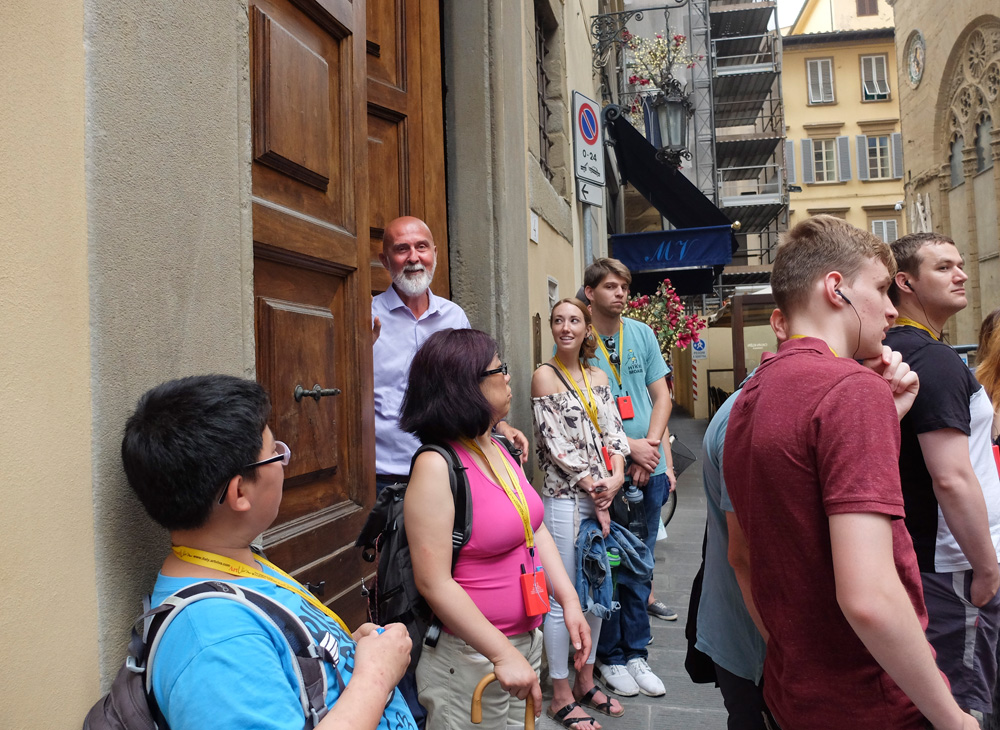“The Historic Centre of Florence can be perceived as a unique social and urban achievement, the result of persistent and long-lasting creativity, which includes museums, churches, buildings and artworks of immeasurable worth” is how UNESCO explains its reasoning for Florence’s status as a World Heritage Site.
Carlo Francini, site manager of the UNESCO World Heritage Site “The Historic Center of Florence” and head of the city’s UNESCO Office, tells us about developments in the Management Plan, the challenges that Florence site is preparing to tackle and some of the most innovative projects currently underway.
Martina Vacca: The Historic Center of Florence has been listed on the UNESCO World Heritage List since 1982. What are the main objectives that have been achieved to date for the conservation of its assets?
Carlo Francini: The main objective of the office, and mine as a site manager of the Historic Center of Florence, is to work on the Management Plan, ensuring that Florence has a useful plan to preserve and maintain the exceptional universal value of the site. Our task is to verify that the list of criteria that allows Florence to uphold the integrity and authenticity of the site is met. We are working towards this goal with a strategic vision. In our 10 years of activity there has been an increase in awareness about the importance of this topic. For instance, we have implemented new regulations and the city’s food licensing has been blocked for three years. We have been able to accomplish this thanks to the 1972 World Heritage Convention, which has been an international reference point on the subject. It is also important to point out that the Italian legislator has accepted this vision, taking into consideration that Florence is a UNESCO World Heritage Site.
MV: 2018 is the European Year of Cultural Heritage and provides an opportunity to consider and analyze the topic of eco-sustainability within Italy’s UNESCO sites. What is Florence’s stance on this issue?
CF: Florence is the first Italian site to have included in its Monitoring Plan the reference points of the objectives of the 2030 Agenda for Sustainable Development approved by the United Nations. Each of the projects related to the Action Plan abides by the “5C Strategy”, based on credibility, conservation, capacity building, communication and communities. Our intention is to understand which goal each project is aimed at. Obviously, most of the project objectives refer to the “Goal 11” of the 2030 Agenda, linked to sustainable cities and communities. We are also implementing the AtlaS-WH project of the Atlantic Area. Together with the World Heritage sites of Porto, Edinburgh, Bordeaux and Santiago), a sustainability plan will be developed in 2020 alongside the Management Plan. Furthermore, I believe that the 2030 Agenda should not only be applied to the management of cultural heritage but also included in the management of the city in general. In my opinion, in Italy we are still a little behind on this topic, which is the real challenge for the future. Plus, for the European Year of Culture, we have organized the 4th UNESCO Meeting of the European World Heritage Sites Association in Noto, Sicily, which was held on October 19.
MV: Today we talk about Cultural Heritage 3.0. How does Florence tackle the challenges of digitizing culture?
CF: This is a difficult issue. We have started a project called Florence Heritage, which is included in our Management and Monitoring Plans. It started well, but is currently having some setbacks, in my opinion, due to the fact that there is too much confusion regarding digital-related topics; sometimes “digital” is considered as “trivialization”, and this is a common mistake to make. Digitization offers incredible opportunities to reach different audiences, as well as being an opportunity for specialists to become acquainted with the use of digital technology, which they have opposed until now. It is rather like people opposing the use of photography in history of art in the late 1800s. Digitizing offers us a scientific point of view on the correct assessment of the state of conservation of heritage in general; this applies not only to works of art but also to monuments. A good example is georeferencing or the possibility of carrying out surveys with a laser scanner. An enormous amount of possibilities exists, including in the field of architectural conservation. We either use them too little or in an excessively spectacular way. Art critics or curators are accustomed to penning books or curating exhibitions, so it is easier to bring their own expertise and simply translate it into the digital world. Unfortunately, many of those who use digital in art often deal with the curation of overly showy events. This happens because there are no basic rules enforcing respect for works of art. Italy should understand its heritage first of all. It would be interesting to use digitizing to reconstruct the context of a work … I believe that we should use digital in art and culture in a more rigorous, more serious and more respectful way.
One of the tasks of the UNESCO Office is developing databases. We need to develop a database of the heritage of the Historic Center of Florence, specifically in terms of architecture. Obviously we already have a range of skills and materials, but we need to organize everything to create a useful management tool but also for the knowledge regarding the city. After the Advisory Mission in May 2017 we were asked to develop a system of databases and we are working on the part related to the research on the management of the site, together with a joint laboratory with the University of Florence, the Heritage City Lab, led by Saverio Mecca, head of the department of architecture. For this we have received funding from the Ministry, thanks to the Law No. 77/2006 on the measures of protection and use in favour of the UNESCO sites, and from foundations.
MV: Which are the major projects launched in 2018 related to the activities of transnational cooperation and the enhancement of the Historic Center of Florence?
CF: We are pointing out to the municipal administration and UNESCO sites system that twinning projects among World Heritage sites are a great opportunity. An intense cultural exchange is currently underway with Edinburgh, which is a charity and not a council office, and therefore has a different structure to ours. Nevertheless, we are working together on the website management and on the AtlaS-WH project, a transnational project financed by the INTERREG Atlantic Area. The UNESCO Office of the Municipality of Florence is mainly involved in the development of a survey on the main common challenges and is responsible for gathering information on laws, regulations, management, international recommendations and best practices.
We also participated in two twinnings with Jordan and Azerbaijan. With Jordan we opened an office a few years ago for the joint management of the less-visited Jordanian World Heritage Site of Umm er-Rasas, known for its Christian churches and mosaics dating to the Umayyad Caliphate during Islamic rule. In Azerbaijan, we have been involved with museum management and have enjoyed effective collaboration with the Carpet Museum in Baku.
While many believe that this kind of cooperation tends to be one-way, the reality is different. Even in the most complex situations there is a lot to learn, even from countries considered to be weak. Being a World Heritage site involves many of these network exchanges and it’s a topic that has huge space for communication. While often there are disagreements when it comes to cooperation, on the subject of heritage we share a common language and it’s very easy to reach agreements, share problems and seek solutions.
In this sense, the AtlaS-WH project is very ambitious. Our work for AtlaS-WH started in September and continues the work begun by Santiago. The Florence office will have the task of creating a broad framework connecting the policies of all the countries involved. The main challenge will be to work with several regulatory frameworks, each different to the Italian one. But being World Heritage sites will allow us to have common grounds of agreements and international policy.






